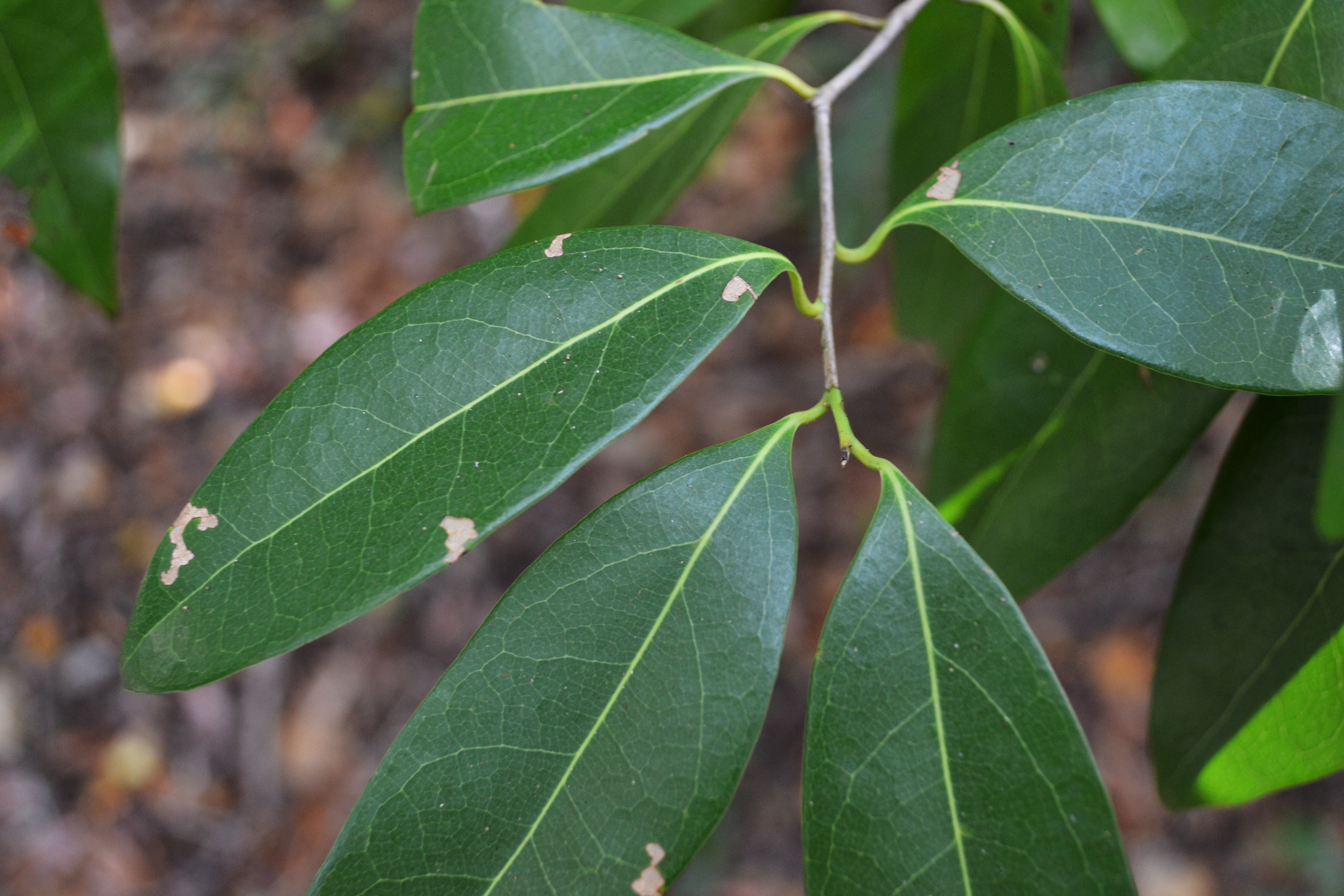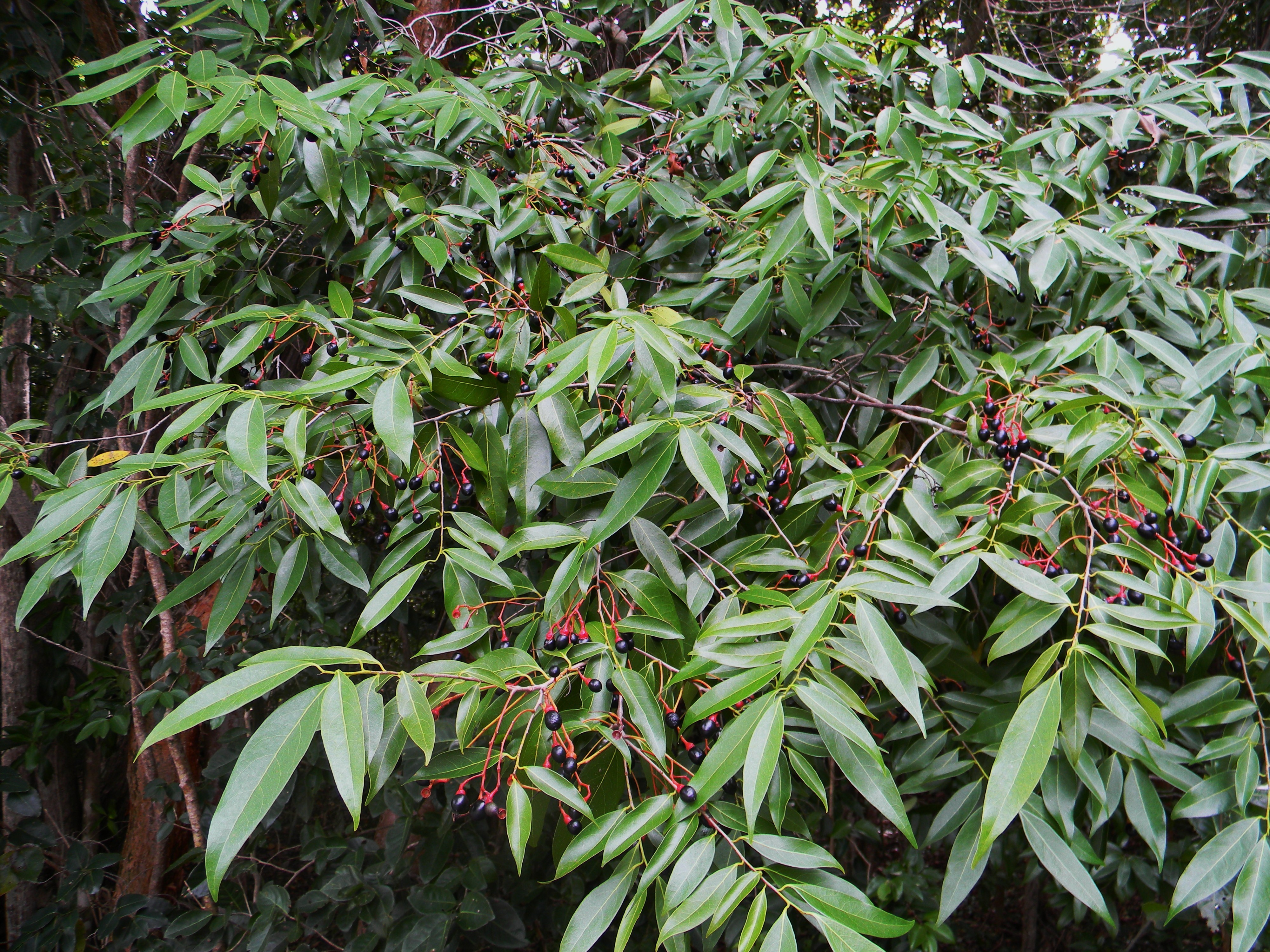Lancewood
Ocotea coriacea
Plant Family: Lauraceae
Leaves: Alternate, simple, lanceolate to narrowly elliptic, apices sharp pointed or sometimes blunt pointed; dark green above, lighter green below, to 15 cm, fragrant when crushed, the petioles have a distinctive J or S shape and this is a good field mark.
Bark: Light gray, smooth, becoming darker reddish brown and furrowed with age.
Flowers: Small, white, with 4 to 6 petals, found in clusters in the leaf axils from spring into summer.
Fruits: A green drupe, ripening to dark blue, to 1 cm, held on bright red stalks; fall to winter.
Habitat: A common species in coastal hammocks and pinelands.
Growth Form: Often shrubby, Lancewood also attains small tree status.
Similar Species: Red Bay (Persea borbonia) has light gray leaf undersides. Guiana Plum (Drypetes lateriflora) has crushed leaves that are not fragrant and has red fruits.
Comments: The range of Lancewood includes the Bahamas, the West Indies, and the eastern coast of Central America. Lancewood was formerly classified as Nectandria coriacea.


